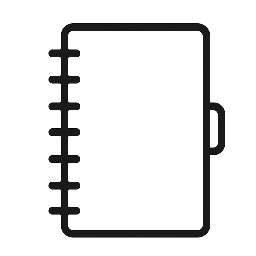Custom wood baseball bats offer players a unique blend of craftsmanship, performance, and personalization. They are made from high-quality hardwoods like maple, ash, or birch, tailored to fit a player’s specific preferences in weight, length, and handle style. These bats stand out because they can be customized to enhance a player’s comfort and hitting performance.
Choosing a custom bat means selecting materials and designs that match individual playing styles, which can lead to improved control and power at the plate. Manufacturers work directly with players to create bats that meet exact specifications, making each piece unique. This level of customization is not typically available with mass-produced bats.
Understanding the benefits of custom wood baseball bats helps players make informed decisions about their equipment. This knowledge can lead to better performance and a more satisfying playing experience.
Overview of Custom Wood Baseball Bats
Custom wood baseball bats offer tailored designs that enhance player performance and personal preference. These bats vary by wood type, design features, and construction methods, setting them apart from standard bats.
Benefits of Customization
Customization allows players to select specific dimensions such as length, weight, and handle diameter. This personalization improves comfort and swing mechanics.
It also offers the ability to choose wood species and finish styles, which can affect durability and aesthetics. Some players opt for custom logos or engravings to reflect their identity.
This level of customization can support better grip, balance, and control. For advanced players, these factors contribute to consistent and optimized performance during play.
Types of Wood Used
Maple and ash are the most common woods in custom bats. Maple is dense and durable, providing more mass behind the swing but can be slightly heavier.
Ash is lighter and offers more flexibility, which some players prefer for its feel and quick swing speed. Birch is another option, combining hardness with flexibility.
Each wood type affects bat performance differently. For example, maple bats often have a harder hitting surface, while ash bats absorb vibration better.
Differences from Standard Bats
Standard bats come with fixed sizes and weights, usually mass-produced with little variation. Custom bats are built to player specifications, improving fit and function.
Wood quality in custom bats tends to be higher, with better grain alignment and fewer defects. Production techniques are more thorough to reduce weak spots.
Custom bats also come with more finish options, including oil or lacquer coatings. These finishes impact bat longevity and grip feel, unlike generic factory finishes.
Popular Design Features
Many custom bats feature tapered handles for easier grip and reduced hand strain. Some include cupped or rounded end caps to alter weight distribution.
Engraved logos, player names, and unique paint schemes are common aesthetic features. These serve both identification and motivational purposes.
Weight distribution can be modified with knob types or barrel thickness adjustments. This affects swing speed and control, tailored to the player’s hitting style.
Choosing and Maintaining Your Custom Wood Bat
Selecting a custom wood bat involves assessing specific factors like weight, length, and wood type to suit individual hitting styles. The bat’s lifespan and performance also depend heavily on proper handling, storage, and regular maintenance routines.
Selecting the Right Bat for Your Play Style
Choosing the right bat starts with matching the bat’s weight and length to the player’s strength and swing speed. A heavier bat delivers more power but requires more strength and control. Length affects reach and swing mechanics.
The type of wood plays a crucial role. Maple offers hardness and durability, ash provides flexible grain and lighter weight, and birch balances hardness and flexibility. Players who prioritize quick swings might prefer ash or birch. Power hitters often go for maple.
Grip and barrel size matter. A thicker barrel increases hitting area but can add weight. The grip should feel secure but comfortable to avoid slipping or hand fatigue.
Customization Options and Personalization
Custom wood bats can be tailored extensively. Options include:
- Length and weight tailored to player size and hitting style.
- Wood choice to suit durability or swing preference.
- Barrel diameter to optimize contact area.
Personalization often involves engraving names, numbers, or logos. Custom finishes and colors enhance aesthetics but do not impact performance. Players should focus on functional customization first, then add personal touches.
Some manufacturers offer knob shapes and handle taper customizations to improve grip control. These details optimize comfort and swing mechanics.
Proper Care and Storage
Maintaining a wood bat begins with proper cleaning after use. Wipe down the bat with a dry or slightly damp cloth to remove dirt and moisture.
Store the bat in a cool, dry place away from direct sunlight or extreme temperatures. Avoid leaving the bat in cars or damp environments as heat and moisture can warp the wood.
Do not apply lacquer or oils beyond manufacturer recommendations, as this can alter swing weight and damage the finish. Use bat tape or grip enhancements instead of modifying wood surfaces.
Longevity and Performance Tips
To extend the life of a custom wood bat, avoid hitting balls that cause damage, like excessively hard or poorly spaced balls. Rotating the bat during play distributes wear evenly across the barrel.
Regularly inspect for cracks, dents, or splinters. Small damage may be repairable quickly, but deeper defects reduce performance and can risk injury.
Using bat sleeves or covers during transport protects the bat from scratches and impacts. Replacing the grip tape when worn maintains control and prevents slipping.
Well-maintained wood bats maintain consistent performance and reduce the chance of breakage over time.





Leave a Reply